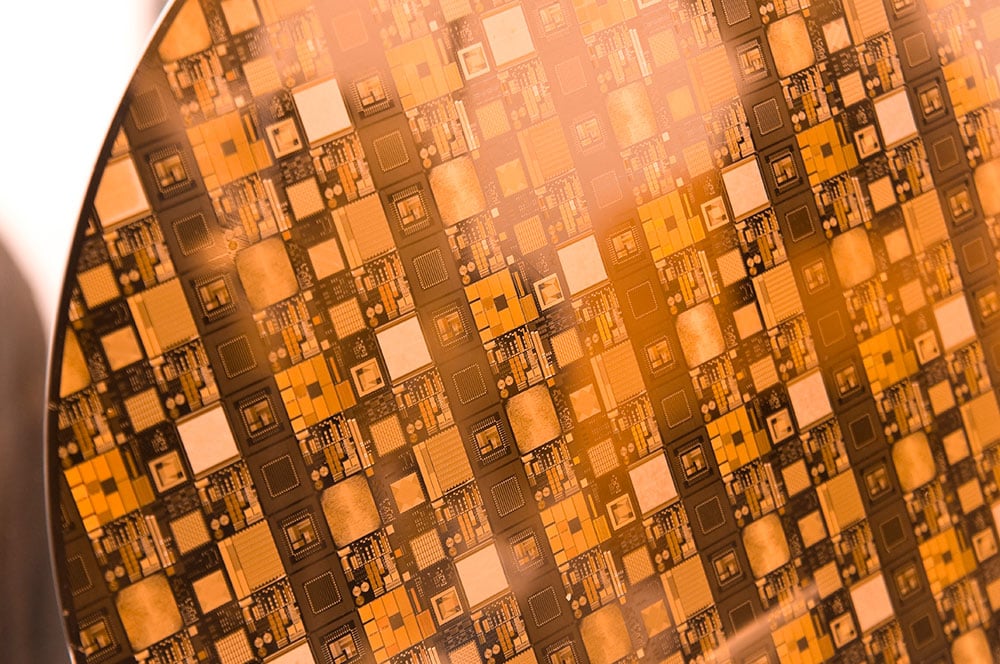Lam Research Perspective
Future of Machine Learning
Dr. Richard A. Gottscho, Executive Vice President and Chief Technology Officer Lam Research, sat down with the tec.news team to discuss his view on the value of artificial intelligence (AI) and machine learning (ML).
Founded in 1980, Lam Research is a leading global supplier of innovative wafer fabrication equipment and services to the semiconductor industry. Their technology and productivity solutions have contributed to increased integrated circuit performance at lower cost, progressing from 130,000 transistors on a chip in the early 1980s to over 1 billion today.
Like many companies, Lam is leveraging artificial intelligence (AI) and machine learning (ML) at the product layer to enable their customers to benefit from lower total cost of ownership, reduced energy consumption, and increased yields. Lam is also using AI and ML in a wide range of applications across its own operations, such as improving fab equipment performance to achieve higher quality and more consistent wafer production throughout entire fleets of equipment.
Achieving these goals is only possible through the efficient use of data. Today, data gathering is done by the semiconductor manufacturer pulling raw data off individual tools. Lam wants to change that by providing cleansed data – including filtering and time sequencing – that is ready for use. This enables customers to best manage their fleet throughout facilities.
Within the individual tools, there are fabrication chambers that have embedded controls used to give more precise and repeatable results, perform fault detection, and provide adaptive feedback for super precise repeatability regardless of incoming materials variability. By making that data available outside the individual fab machine, AI and ML algorithms can analyze large pools of data to unlock insights that can help to achieve better performance, improve equipment functionality, identify anomalies, and avoid equipment failures and unplanned downtime.
USE CASES FOR AI & ML IN SEMICONDUCTOR MANUFACTURING
Variances in the fab unit can be caused by many factors, such as the temperature control of chamber surfaces, how fast the RF match network tunes, and the temperature control of the wafer. The cause of parameter differences between chambers can be determined by closely examining the data from the tools themselves.
Detecting defects is another top use case. When manufacturing nano-sized devices, the tolerance for defects is essentially zero – using AI and ML can help detect conditions that lead to defects early on to increase yield.
THE RIGHT STRUCTURE IS CRITICAL
Implementing AI and ML requires two different areas of expertise working together:data scientists and existing domain experts. For Lam, this means employing a team of in-house data scientists who work closely with its engineers on the development of its tools. Having that knowledge in-house allows Lam to offer a seamless experience to its customers, who otherwise would need to manually link their machines together. They also leverage outside consultants, who bring fresh ideas and techniques.
Combining both in-house data scientists and external consultants ensures that Lam is always on the cutting-edge of AI and ML.
AI AND ML ARE THE BUILDING BLOCKS OF INDUSTRY 4.0
Gottscho is responsible for overseeing Lam’s Industry 4.0 transformation. He notes that nearly every company is implementing a digital transformation strategy now, seeking to achieve increased productivity, reduce lead times, and improve transparency into all aspects of the production process. For Gottscho, the biggest challenge is implementing mass overhauls in an established company, but he frames this as a proverbial problem all engineers face: “We have to redesign our engine while it is running down the track.”
Another key challenge is having enough subject matter experts and the short supply of data scientists, which he believes is a gating factor to overall progress worldwide.
“The problem isn’t money, but people, since you can’t grow those people overnight. It forces you to be very selective in what you do first, second and third. Industrial transformation isn’t something that happens overnight.”
LAM RESEARCH & HARTING COLLABORATION
Lam and HARTING are collaborating on new ways to improve semiconductor production. Gottscho believes HARTING’s concept of measuring voltage, current, phase, and overall power consumed by equipment in real time with sensors embedded in connectors has great potential to address the challenge of monitoring large number of signals form fabrication equipment in real-time and support advanced AI and ML applications. The approach would be relatively easy to apply and highly cost-effective compared to other sensing methods.
Real time information processing offers significant advantages compared to today’s current solution of using an electron micrograph, which requires several hours to process and costs thousands of dollars. Gottscho sees embedded sensors in connectors as being as important to semiconductor equipment as they are to self-driving cars, providing information in real time that informs critical decision-making.
The approach will also support Lam’s commitment to achieve net zero carbon emissions by 2050, which it announced earlier this year. The first step in designing energy efficient equipment is knowing how much energy is being consumed within each element, and the best way to do that is through use of embedded sensors that capture critical operational data and insights to enable industrial transformation.

